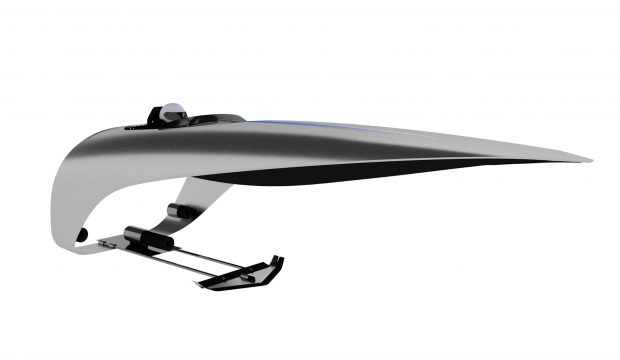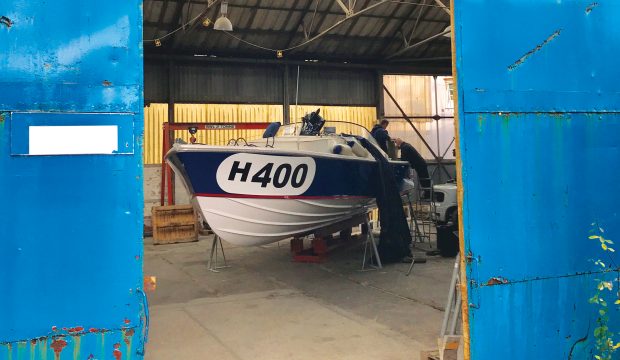Boats built purely for speed aren't necessarily the answer for exciting yacht racing
We’ve just had the most exciting America’s Cup for decades, no doubt due to the skill of British Olympic gold medal yachtsman Sir Ben Ainslie whose tactics turned the tables at the last minute in favour of his US employers.
The fact that Ainslie was significant in this extremely expensive contest gave the event a huge amount of publicity in the UK, far more than any previous America’s Cup contest since the famous races of the 1930s. It is this publicity and the eventual winner’s success against all odds which has got a lot of people thinking.
The yachts taking part were nothing like the type of craft that competed when the first race took place in 1851. Later challenges were competed aboard large monohulls before the rules were altered after WWII to allow smaller, less costly 12-metre class yachts.
This remained much the same until 2010 when the Cup was fought between large multihulls and it’s this which seems to have resulted in new thinking when it comes to high performance under sail.
It now appears that ultimate speed rather than seagoing prowess has become the attraction and if this is so then such enthusiasts only need to look at offshore powerboat racing to see where they could be making a huge mistake.
No one knows more than I about the early days of the racing powerboat catamaran. Many thought it was a touch of insanity on my part to be so enthusiastic about multihulls, but the Americans dominated offshore racing powerboat design in those days and we needed to break their position at the top.
US-designed and built monohulls won all major races and anyone wanting to chase the Class 1 (16 litre) world offshore championship title, then known as the Sam Griffith Trophy, was forced to purchase their monohulls, the Italians being one of the biggest customers.
Meanwhile, Italian Angelo Molinari had designed and built an inshore, circuit-racing catamaran in which his son, Renato, dominated the 1966 Paris 6 Hour race. From then on it was the racing catamaran that took over circuit sport but although several tried their hand with a seagoing version none had any luck until 1969 when James Beard and Clive Curtis came up with their first successful multihull (pictured), brushing aside all monohulled challengers.
Cougar dominated the market and slowly moved up the scale to Class 1 but others soon followed with boats built in timber, then aluminium and finally carbon-fibre reinforced plastic. But my early backing of racing multihulls backfired somewhat, as these new craft were incredibly expensive, in many cases costing over twice that of the equivalent monohull, making the sport even more exclusive.
As a result, offshore powerboat racing in the big league is now completely out of touch with regular boating and is the domain of the wealthy competitor and while this obviously applies to the current sailing world with its America’s Cup-type hydrofoil, the big difference are the sea conditions where they race.
Many yachtsmen must be eyeing the America’s Cup hydrofoil with a certain envy, and some may even find the money to mount a challenge. If so they could eventually face similar problems to their powerboating counterparts when it comes to the actual race itself.
Powercats can no longer be called offshore because when it comes to being seaworthy they are anything but. The powerboat racing cat beat all other craft almost overnight as regards speed and outright performance but only in moderate sea conditions.
When facing more lumpy weather they become overwhelmed, forcing a serious reduction in speed and leading to potential hull damage due to the stresses involved. With conditions anything bar flat calm race organisers are forced to arrange short inshore rough-weather courses or cancel events altogether.
This gives little opportunity for conventional monohulls to feature. It becomes the fastest boat that wins rather than the first boat to finish. Hence the sport has slowly declined to a level where today most so-called offshore championship heats are little more than short multi-lap affairs along the shoreline.
Such boring contests leave little room for media coverage and its loss has tended to accelerate the decline of the sport still further. As a result, some British powerboat racing clubs began outlawing what had initially been a British creation.
The 2008 Round Britain had no multihulls in the line-up while the world-renowned Cowes-Torquay-Cowes also banned catamarans three years ago and returned to a genuine offshore format.
The most exciting proposition in modern powerboat racing is the forthcoming Venture Cup, to be raced between London and Monte Carlo in June 2014, where organisers have again wisely decided to limit the event to monohulls.
There’s undoubtedly a renewed enthusiasm for genuine offshore racing because of this, and sailing enthusiasts should take heed.











